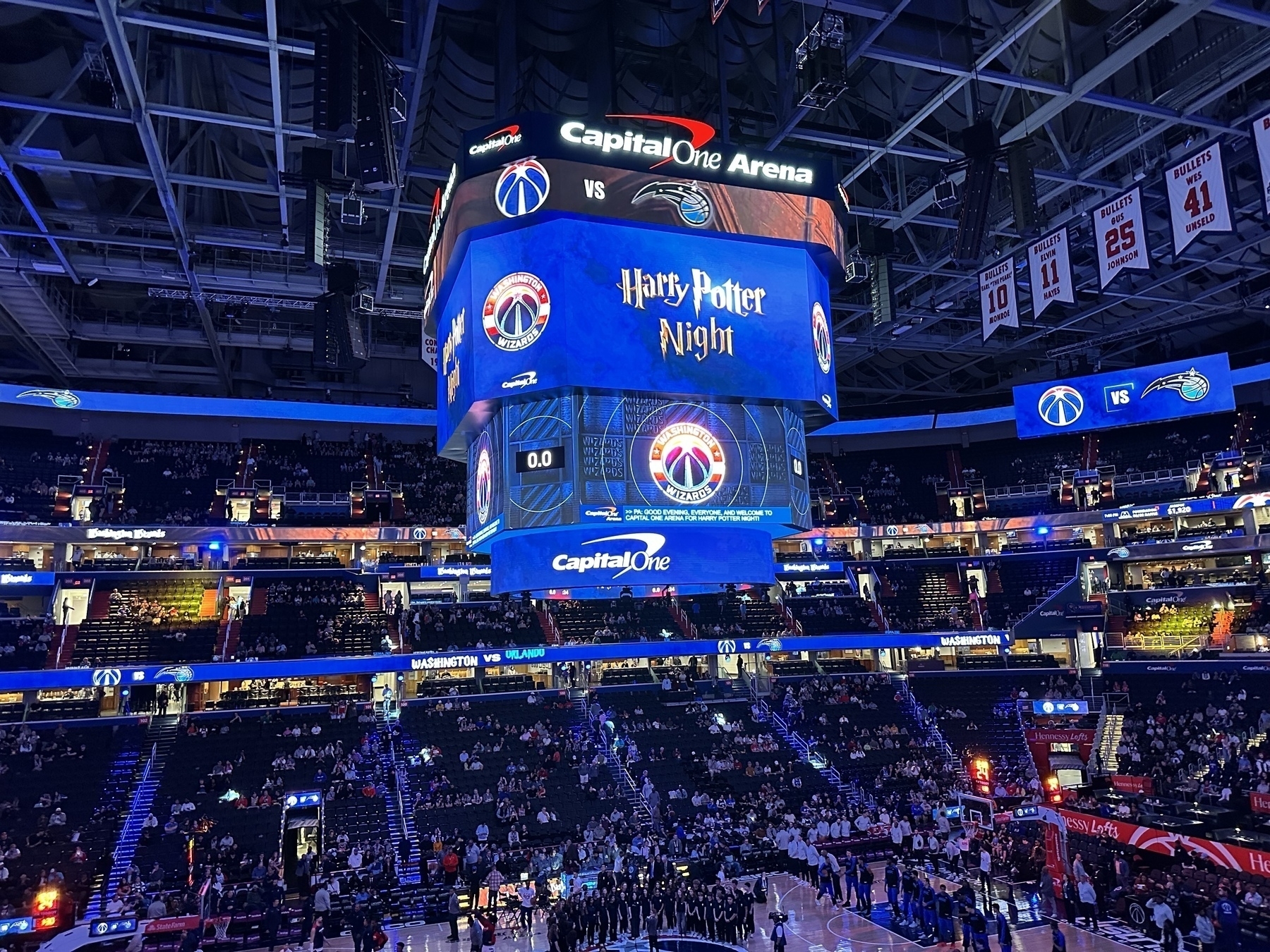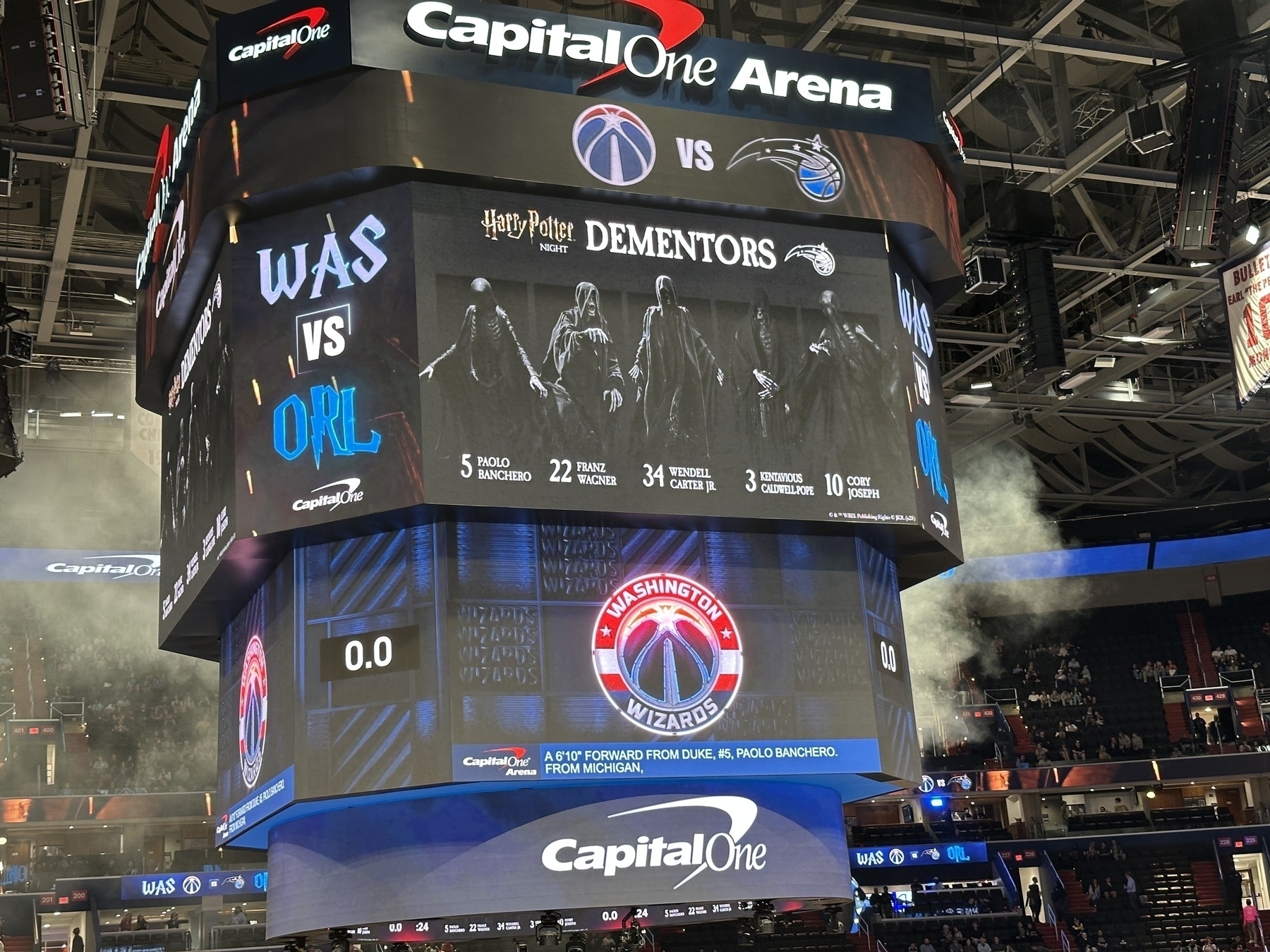🏀 Kudos to the person who suggested that the Orlando (Magic) at Washington (Wizards) game should be Harry Potter Night. Showing the Orlando starters as dementors was a lovely touch.


Richard Feynman popularized the term “cargo-cult science” as actions of research who follow the form but not showing much if any care for the substance of science. Andrew Gelman has second thoughts about the metaphor and proposes “ritual science” instead, and for good reason: cargo-cult implies a technological gap that may be impossible to bridge, while he uses ritual here to mean mindless repetition.
The maneuver does throw rituals under the bus, as proper rituals are far from mindless. Still, this is indeed how the word “ritual” is used colloquially so Gelman is on the right track. “Mindless science” would also cover the phenomena though is too broad: science — or rather, scientists — can be mindless in other ways. (ᔥAndrew Gelman)
If the world wasn’t chaotic enough, get ready for an invasion of the home humanoid robots. My cynical side predicts mechanical Turks, or rather Cambodians and Vietnamese, controlling these remotely as a service that is not (yet) subject to tariffs.
🏀 Kudos to the person who suggested that the Orlando (Magic) at Washington (Wizards) game should be Harry Potter Night. Showing the Orlando starters as dementors was a lovely touch.


Don’t feel obliged from Oliver Burkeman is on my list of things to occasionally re-read. High school was the right time for me to hear this advice from one of his Guardian editors: “if you can’t do something, saying no right away usually makes it much easier for everyone."
Big news: DEVONthink 4 is almost out as a public beta. A Reddit user got an early look at the announcement and a few things stick out:
I wish AI integration was on-device only as online integration will limit the types of data I can use it on, but still, sign me up! (↬r/devonthink)
🍿 A Complete Unknown (2024) was fine. Timothée Chalamet looks like Bob Dylan and has a better singing voice. Ed Norton was even better: his interpretation of Pete Seeger would be a great children’s show host. The only thing missing was why any of this mattered. Maybe you had to be there?
Waiting with bated breath for the “Make America Wise Again” campaign.
What to call this momentous moment in history? “Liberation Day” doesn’t quite capture the sentiment. I propose FAFO Day.
🍿 ParaNorman (2012) from Laika wasn’t to the level of Coraline which preceded it or Kubo and the Two Strings which came right after: you can sort of see the movie it could have been had it gone through a few more feedback cycles, Pixar-style. Still quite good, and now on our Halloween to-watch list.
Listening to the most recent episode of ATP, I learned a surprising fact about how Apple developers see their user statistics: the number of people who opt out of sharing is not available, and the only statistics developers get is about the users who opted in. This may make naïve sense — hey, they don’t want you to know about them so we’ll erase them from existence Soviet-style — but is in fact statistical malpractice. The numbers Apple does share are only a sample of the total user base, which is fine as long as you know or can estimate the size of the population you are sampling. Without a way to estimate the denominator, the numbers are meaningless.
The bare minimum that Apple could and should do, without breaking any privacy rules, is to share the number of people who opted out. With this number in hand, a developer would be able to project worst-case scenarios and likely ranges for each statistic of interest. If Apple dedicated just a tiny bit more resources to developer relations, they could automate this step and build in worst-case numbers into the interface. A more sophisticated company that cares about the developer ecosystem could even create complex predictions models that would give both worst-case numbers and the 95% confidence intervals for each statistic in question.
Why should Apple care, other than doing a solid to their developer ecosystem with a minimal investment? Well, by making their default user statistics useless they are in fact incentivizing developers large and small to track their users by other means. Large developers may do that anyway since they are likely to have a could component to their app. But an indie developer may turn to third party services: if I am a teenager working on my first big app I will probably turn to the fastest and cheapest way to track, and not knowing anything about anything I am going to guess some of the offerings in that part of the price-value spectrum are going to be less than scrupulous.
So this is how Apple’s privacy-minded view combined with thriftiness and lack of care towards developer experience can lead directly to worse overall privacy for their users. What a surprise.